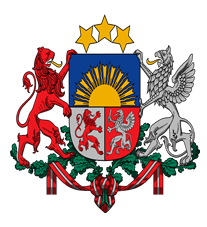Latvia: Government
Key Figures
- Chief of State:
- President Edgar Rinkevics
- Head of Government:
- Prime Minister Evika Silina
Overview
- Government Name:
- Republic of Latvia
- Constitution:
- Adopted: 1922, reintroduced in 1990; Sets out a foundation for the roles and structures of its three branches of government. Also discusses fundamental human rights and establishes Latvia as a democratic republic.
- Government Type:
- Parliamentary Republic

Index of Economic Freedom
Country Risk Rating
Government Branches
| Main Powers | Election Process | Election Cycle 1 | |
|---|---|---|---|
| Executive | The president is largely a ceremonial head of state, has influence rather than power; President has personal discretion over the proposal of legislation to the parliament, vetoing legislation, and calling referendums on legislation. The prime minister's powers, although formally given to the president, are exercised constitutionally by the prime minister. Some of these powers are acting as the commander-in-chief of the armed forces, signing treaties, representing Latvia broad, and officially appointing ambassadors and other officials. |
The president is elected by Saeima. The prime minister is appointed by the president with the approval of Saeima. |
4 years |
| Judicial | Provides jurisdiction on the various levels of court cases presented. |
Judges are appointed by Saeima. |
Life appointment until age 70 |
| Legislative | Saeima acts as a unicameral legislative body for the Latvian government. |
100 members are elected through a flexible-list proportional representation system. |
4 years |
Regional Trade Blocs
International Organization Participation [2]
Environmental Agreements [3]
Tax Information [2]
- Tax Authority:
- State Revenue Service
- Tax Name:
- VAT
Sources:
- ElectionGuide http://www.electionguide.org/
- EY, http://www.ey.com
- CIA World Factbook, https://www.cia.gov/the-world-factbook/
- U.S. Bilateral Relations Fact Sheets http://www.state.gov/r/pa/ei/bgn/


